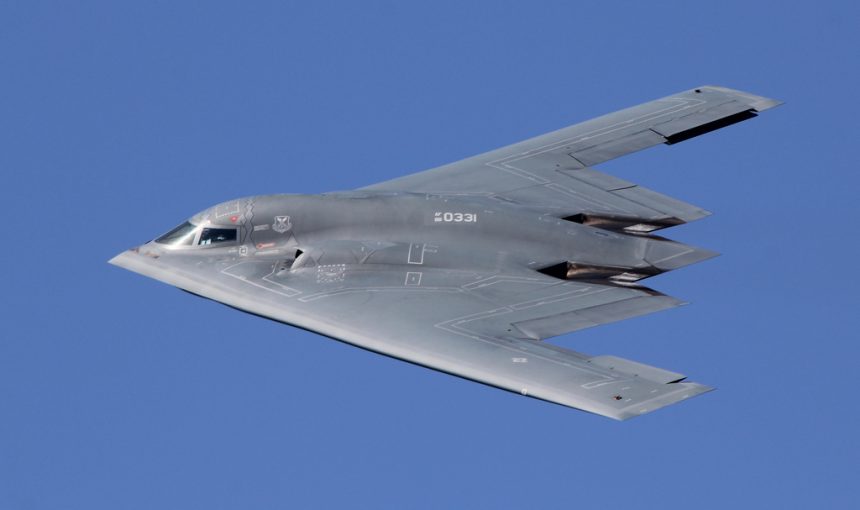Forget the B-1s: TLAMs (Tomahawk Land Attack Missiles) and B-2s would probably start an eventual pre-emptive strike on Pyongyang.
Although they have been involved in several “show of force” missions over the Korean peninsula, the B-1B Lancers (“Bones” in accordance with the nickname used by their aircrews), that have been supporting the U.S. Pacific Command’s (USPACOM) Continuous Bomber Presence mission since Aug. 6, 2016, would probably not be involved in the very first stages of an eventual U.S. attack on North Korea.
Indeed, should Washington decide to launch a (conventional) pre-emptive strike on Pyongyang, it would be a pretty standard air campaign, opened by cruise missiles, most (if not all) shot by warships or submarines, followed by strategic and tacair (tactical airplanes).
A North Korean war would probably include four phases:
1) Build-up & intelligence gathering phase (underway)
2) Rain of cruise missiles
3) Strategic bomber strikes
4) Tacair involvement to go after all DPKR batteries and artillery that could fire towards Seoul
Phase 1 involves moving required assets in place and collect the data needed for proper targeting. This phase has already started. Satellites and spyplanes have already been watching North Korea for months; if they really decide to strike, such intelligence activity will only be intensified, to support identification of targets to be hit in the first stages of the air war, especially since NK has already started moving TELs across the country.
Phase 2 would probably see the involvement of the destroyers in the 7th fleet area of operations, each theoretically capable to launch up to 90 Tomahawks Tactical Cruise Missiles (actually less, because these warships usually carry a mix of attack and air defense missiles). Submarines could also be used to launch the TLAMs.
Some U.S. strategic bombers would probably be launched in global strike round-trip missions from the US (as well as from Guam) to attack specific targets such as bunkers and underground sites (Phase 3): few B-2 Spirit stealth sorties (possibly using the 30,000-lb GBU-57A/B Massive Ordnance Penetrator bombs) to be followed by some more B-1 and possibly B-52 ones.
Phase 4 would see the involvement of tactical aircraft (from land bases or aircraft carriers) involved in the hunt for road-mobile ballistic missiles and any other artillery target required to prevent a retaliatory attack (even a nuclear one) by Pyongyang: not an easy task, considered that many of these could be hidden underground or dispersed. Anyway, the Terminal High-Altitude Area Defence system, or THAAD, along with Aegis warships, would have the role to destroy incoming missiles in case of missile launches towards South Korea.
High flying RQ-4 Global Hawk drones flying from Yokota AB, Japan, would perform the post-strike BDA (Battle Damage Assessment). Some sorties would also be flown by U-2s.
Among the (many) supporting assets, the U.S. Navy E-6 Mercury jets would probably play a major role in a U.S. air war on North Korea.
The 16 E-6B TACAMO (“TAke Charge And Move Out”) are among the most important assets in the U.S. inventory. They are capable to communicate on virtually every radio frequency band, on commercial satellites and on the Internet, using also a secure VOIP system.
E-6s are used to relay instructions to the fleet ballistic missile submarines in case of nuclear war but also act as back ups of the four E-4Bs NAOC (National Alternate Operations Center), working as ABNCP (Airborne Command Post) platforms: in other words, in case of war, terrorist attack, armageddon etc they can direct nuclear (and conventional) forces, by receiving, verifying and relaying EAM (Emergency Action Messages): that’s why they are dubbed “doomsday planes.”
Similar to the civilian Boeing 707, but with a 737 cockpit, E-6s have a range of 5,500 miles, and accommodate 23 crew members.
They can perform the so-called Looking Glass mission (mirroring the ground-based C3 center at Offutt AFB and relaying orders), they can talk to submarines trailing a 26,000 ft wire antenna, launch commands to ICBMs (InterContinental Ballistic Missiles) via Airborne Launch Control System, and perform C3 (Command Control Communication) operations to forces operating in theatre.
When stealth bombers are launched on a round-trip, Global Strike mission across the globe, an E-6 or two (with the second acting as back up) are used to provide command and control support to the B-2s.
Several E-6 are flying at any given time: in spite of their important role, E-6Bs are among the few military planes advertising their position on the Web using full ADS-B. However, whilst some of them are involved in training activities, others may be supporting actual operations, hence it would be extremely difficult to guess something big is about to happen in North Korea even if tracking on Planefinder.net or Flightradar24.com.
Top image credit: Christopher Ebdon









